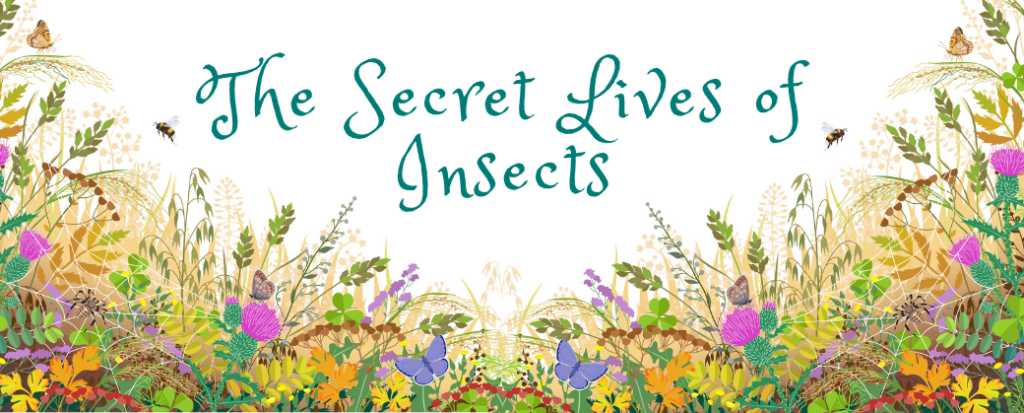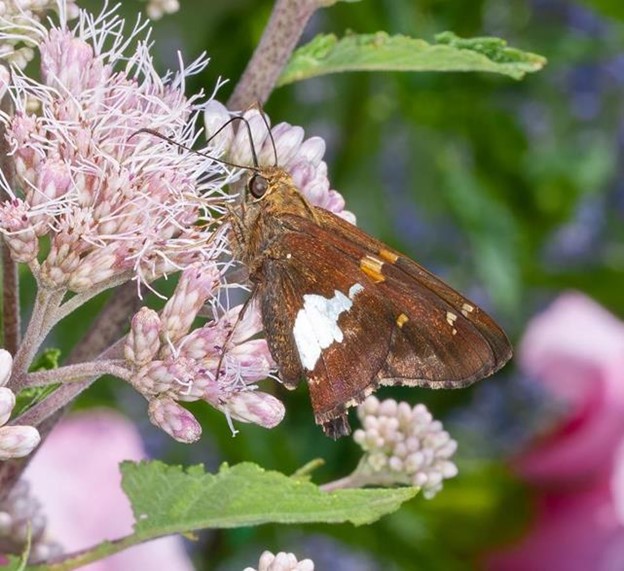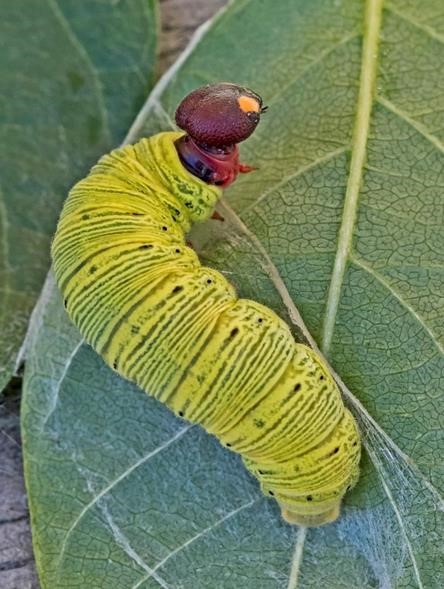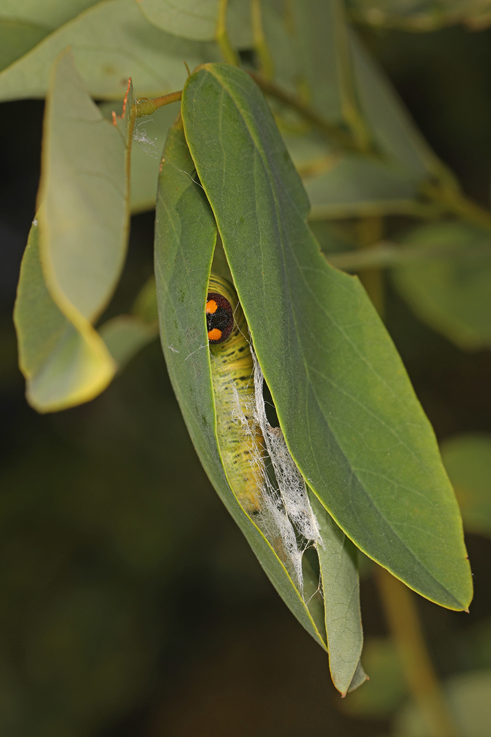
Silver-Spotted Skippers: Leaf Tents & Projectile Poop!
By Judy Ferris, ACLT Guest Blogger

Skippers may not be as colorful as their butterfly cousins, but they make up for it in feistiness. Walk into a male Skipper’s territory and he immediately pops up to inspect you. Zipping rapidly from perch to perch, he seems more closely related to a jet fighter than a fluttering butterfly.
Skippers branched off early, during the time of dinosaurs, from the line of butterfly evolution. They tend to be drab in color and have large heads and stocky bodies. The name Skipper’ comes from their rapid, erratic flight style. Male Skippers often rest on platforms such as flowers to scan for passing females. Periodically, they zoom forth to patrol their territory and drive away usurping males or, perhaps, gardeners.
The most common Skipper in much of the U.S. is the Silver-spotted Skipper. It is easily identified by its large size (wing span about 2 inches) and the large white spot on its wings. The success and abundance of Silver-spotted Skippers is attributable, in part, to the fact that they are not picky eaters. Adult Skippers feed on nectar and are found in a wide variety of habitats. Skipper larvae are versatile vegetarians, feeding on many different host plants.


Skipper eggs are usually laid singly upon a leaf. Upon hatching, the instar (larva) chews 2 parallel channels in the blade of a leaf to form a flap. The flap is then folded over and secured with silk, creating a snug little tent. By day, the caterpillar hides within this leaf tent. It emerges at night to feast on leaves, eventually growing up to two inches long. As the larva grows, newer and more elaborate tents are constructed, sometimes involving multiple leaves. (Weiss et al.2003, Lind et al. 2001) The tent, however, only partially protects the larva. Some wasp species are adept at visually identifying folded leaves and extracting the juicy caterpillar within.
Other wasp species are able to hunt down caterpillars by the scent and chemical signature of the caterpillar’s frass (caterpillar poop). Thus, a skipper larva must never poop in its own tent! As always, Mother Nature has come up with an innovative solution to the problem; ballistic pooping! Skipper larva are equipped with a special comb’ which latches the anus shut. Once a frass pellet is pushed into the ready’ position, the caterpillar contracts its rear legs, thus increasing its blood pressure by up to 1 pound per square foot! Warning! Warning! The comb finally releases and ZING! The frass pellet shoots out of the caterpillar and rockets out through the door of the leaf tent. Frass ejected in this way travels at high velocity up to 5 feet or 38 body lengths! (Weiss et al. 2003-2006, Caveney 1998)

In fall, mature caterpillars, still hidden in leaf tents, produce brown pupa, often secreting a powder to keep themselves dry. Baby powder for bugs! Isn’t it amazing how Mother Nature thinks of everything? Each pupa and tent eventually falls to the ground with the brown leaves of autumn and remains there until spring. As the weather warms in spring, a winged adult Silver-spotted Skipper emerges from the pupa, intent on mating and laying eggs for the next generation.
For more detailed information on Skippers, including identification, try “Butterflies of the East Coast” by Rick Cech and Guy Tudor.